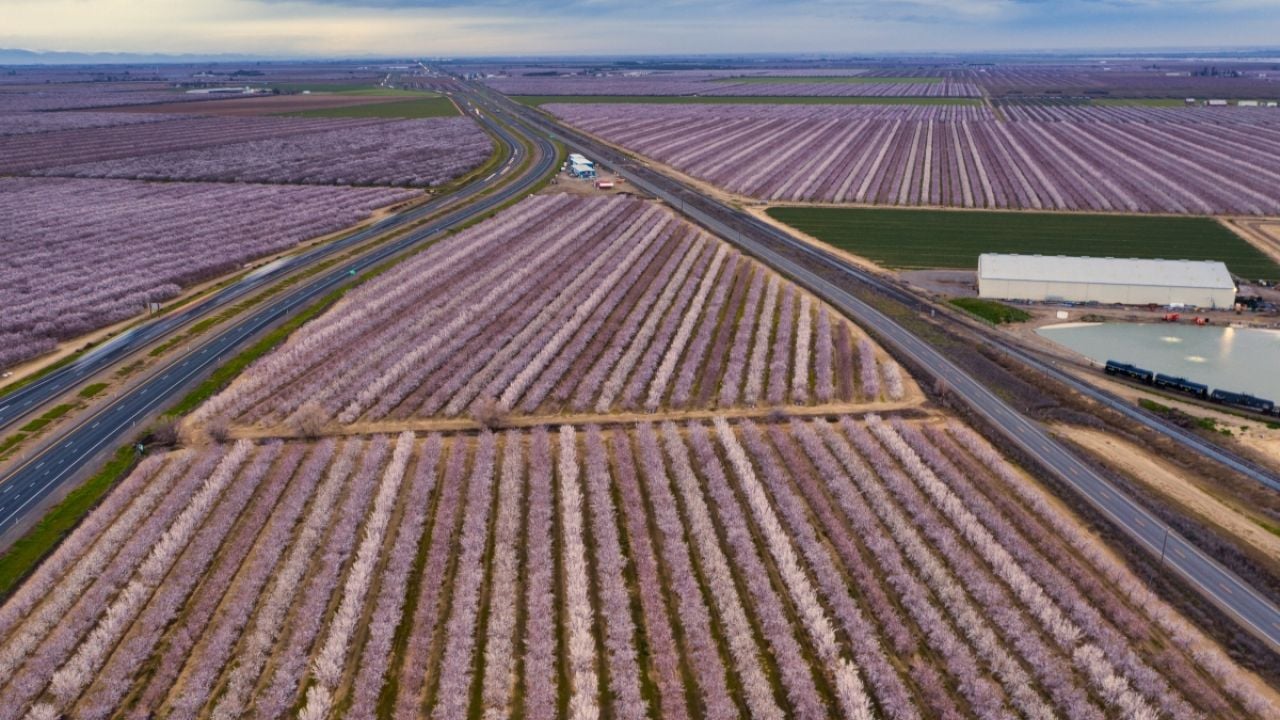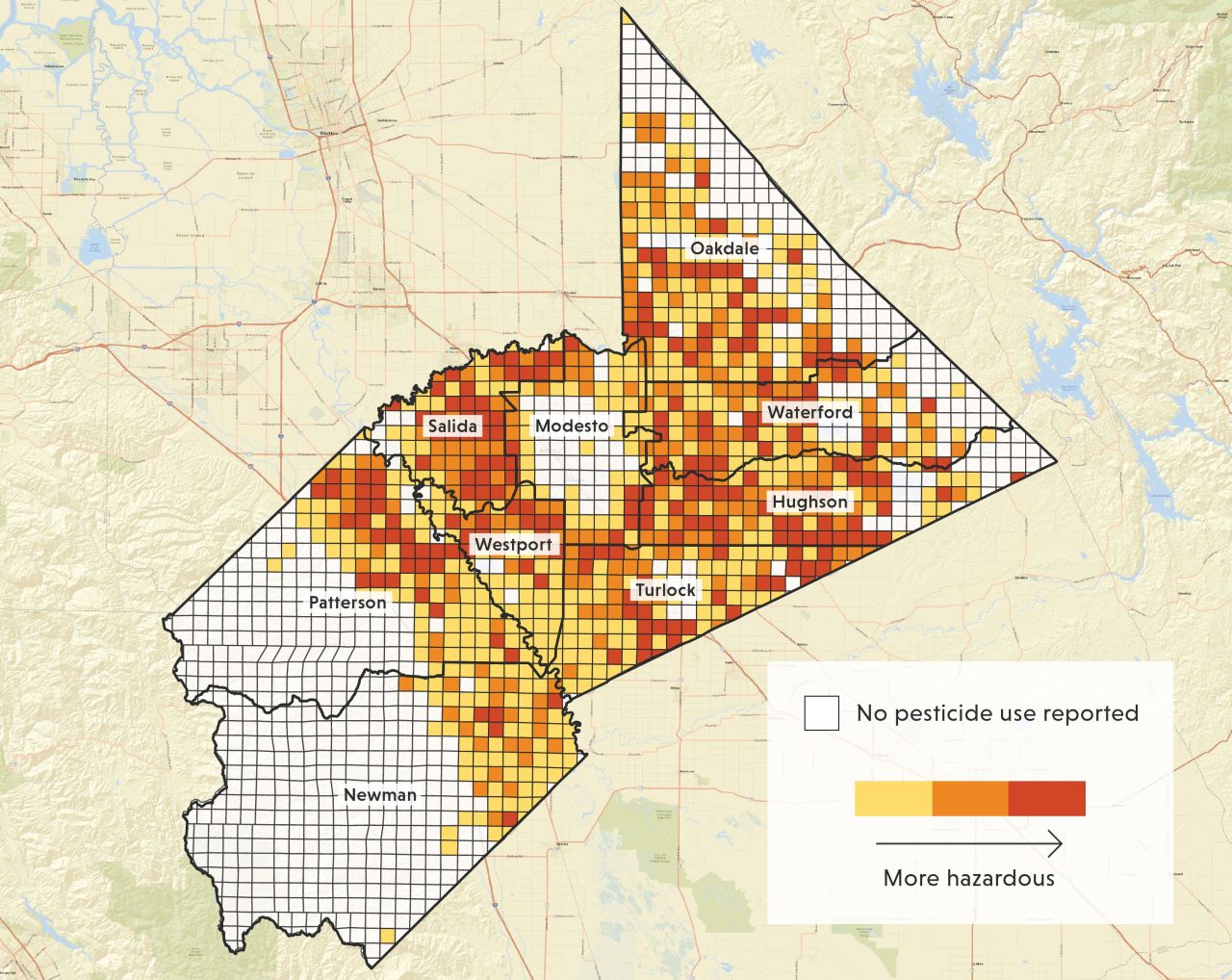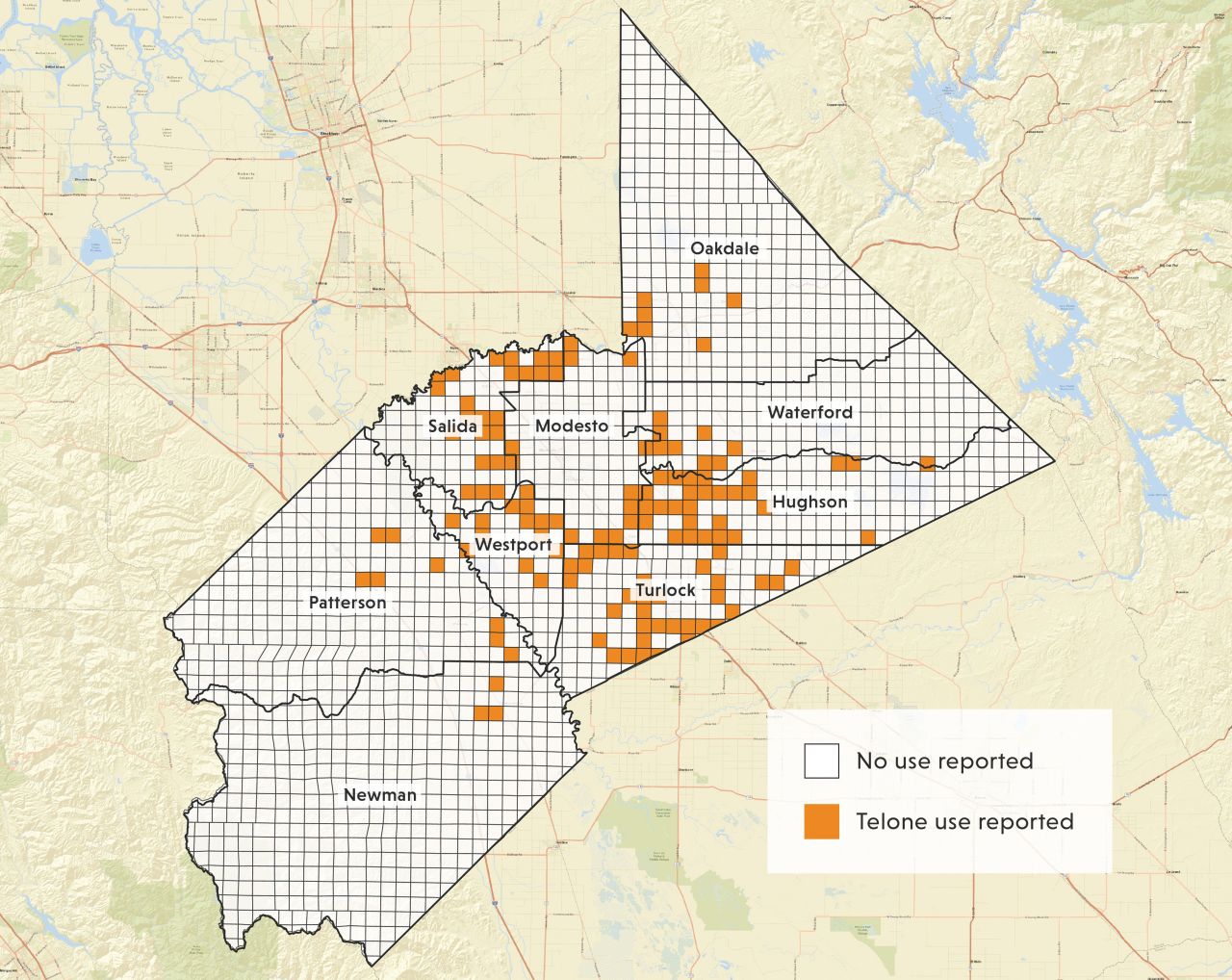
This report is a joint project of the Environmental Working Group and Valley Improvement Projects. Read the news release on this joint project here.
Who is affected by pesticide use?
The residents of Stanislaus County are at potential risk of health harms associated with the spraying of pesticides on agricultural fields in the region. Stanislaus County is one of 10 counties in California with the heaviest pesticide use.
Almost half the county’s residents identify as Hispanic or Latino, above the state average of 39.4 percent, according to the most recent U.S. census.

How are pesticides toxic?
Pesticides are toxic chemicals used to kill pests or plants (weeds) that might interfere with crop growth. They can be solid, gas or liquid, and there are many different modes of application.
In California some pesticides are restricted and require a permit and notification of the county before use. Restricted pesticides can be more toxic or more prone to contaminate water or damage other crops.
Telone is one of the most used highly toxic pesticides in Stanislaus County. It is used on fields before planting almonds, in particular, and other crops, including sweet potatoes, walnuts and fruits. Its main ingredient is a chemical known as 1,3-dichloropropene, or 1,3-D.
California has identified 1,3-D as a cancer-causing chemical under the state’s Proposition 65 warning and notice program. Once applied, it can drift – in this case, miles from the initial site of application.
How much Telone is used?
More than 1.3 million pounds of 1,3-D were applied to fields in Stanislaus County in 2021 – more than one-fifth of the county’s total pesticide use.

Why we are concerned
Children who attend school or live near where pesticides are applied may face higher risk of exposure. Kids are more vulnerable to harmful contaminants, because their bodies are still growing, and toxic chemicals are especially harmful to developing organs and tissues.
Where are pesticides applied?
We’re concerned about potential harm to people who work in or live near crop fields, since they are exposed to pesticides used in massive amounts.
Pesticides are applied throughout Stanislaus County. But spraying on fields near schools is especially concerning, since children who live near and attend the schools could be exposed.
In Stanislaus County, pesticides are applied near 123 schools. Of those, 110 are located in areas where the use of restricted pesticides have been reported. At least 19 schools are in areas where the largest amount of restricted active ingredients are used.
Fourteen of those 19 are elementary schools or other child development centers, attended by young kids, who are especially vulnerable. Telone is used near 18 schools in the county.
When are pesticides applied?
Restricted pesticides are applied year-round in Stanislaus County, with the heaviest use reported in March, April and November. 1,3-dichloropropene use follows the same pattern, except in December, when its use is not allowed.
Below are the 10 pesticides used most frequently throughout Stanislaus County in 2021. The table includes the active ingredient – the chemical that controls pests – in each pesticide, how many pounds were applied, which crop they’re primarily used on, and the risk to human health.
Some of the active ingredients are listed under Proposition 65, the California law requiring companies to announce when they use chemicals that can cause cancer and other harms.
The 10 most used pesticides in Stanislaus County in 2021
|
Active ingredient |
Reported total amount used in 20211 (pounds) |
Primary crop |
Health harms2 |
Additional notes |
|
Mineral oil |
1,540,000 |
Almonds |
Respiratory toxicity |
|
|
1,3-dichloropropene (Telone) |
1,340,000 |
Almonds |
Cancer, respiratory toxicity |
Restricted use pesticide, Proposition 65 listed |
|
Glyphosate |
550,000 |
Wine, grapes |
Cancer, developmental and reproductive toxicity |
Proposition 65 listed |
|
Sulfur |
523,000 |
Cilantro |
Respiratory toxicity |
|
|
Metam-potassium |
435,000 |
Almonds |
Cancer, endocrine disruption |
Restricted use pesticide, Proposition 65 listed |
|
Copper hydroxide |
202,000 |
Almonds |
Respiratory toxicity |
|
|
Methyl bromide |
172,000 |
Nursery plants |
Cancer, neurotoxicity, developmental and reproductive toxicity, respiratory toxicity |
Restricted use pesticide, Proposition 65 listed |
|
Glufosinate |
143,000 |
Nursery plants |
Neurotoxicity, developmental and reproductive toxicity |
|
|
Potassium phosphite |
119,000 |
Almonds |
No data available |
|
|
Chlorothalonil |
114,000 |
Almonds |
Cancer, neurotoxicity, endocrine disruption, developmental and reproductive toxicity, respiratory toxicity |
Proposition 65 listed |
1 Pesticide use data come from pesticide use records for 2021 obtained by Valley Improvement Projects and the Environmental Working Group from the Stanislaus County Agricultural Commissioner’s Office.
2 Pesticide toxicity data were compiled in peer-reviewed paper (Temkin AM, Uche UI, Evans S, Anderson KM, Perrone-Gray S, Campbell C, Naidenko OV. Racial and social disparities in Ventura County, California, related to agricultural pesticide applications and toxicity. Sci Total Environ. 2022; 853: 158399). Additional pesticide toxicity information was obtained from chemical risk assessments published by the California Office of Environmental Health Hazard Assessment, https://oehha.ca.gov/chemicals/




